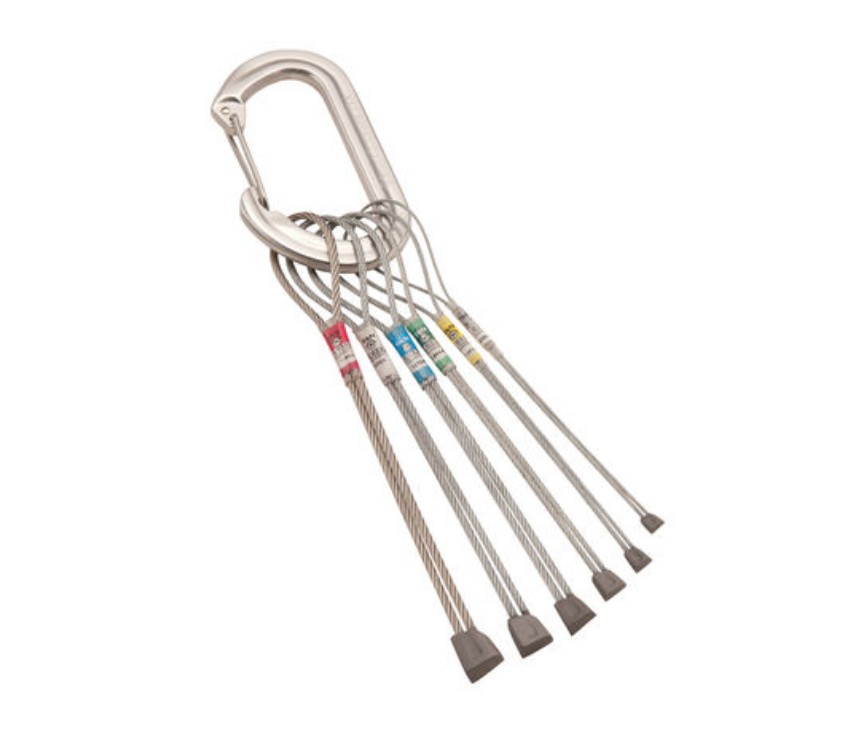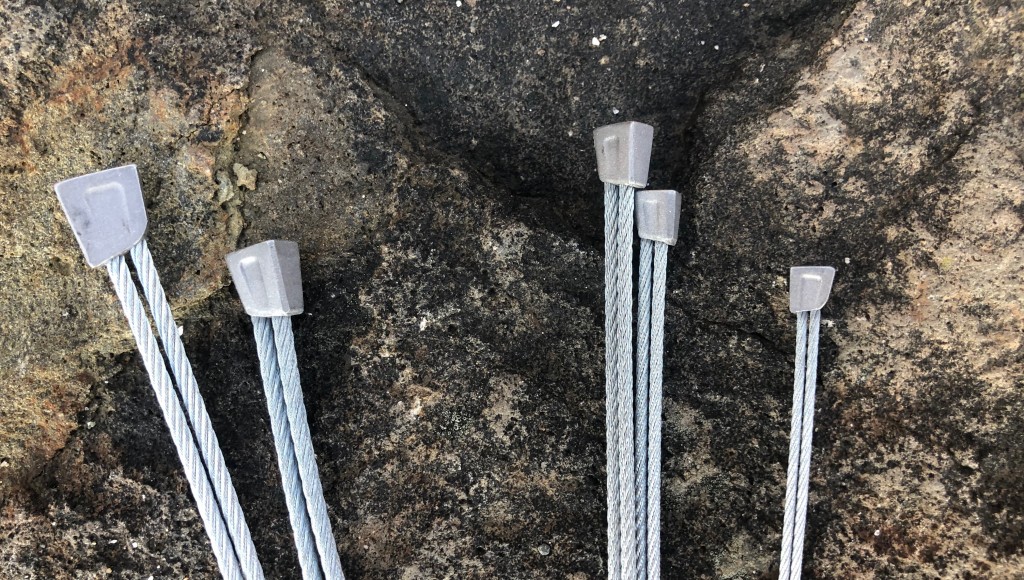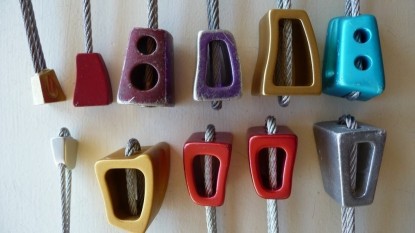Black Diamond Offset Micro Review
Our Verdict
Our Analysis and Test Results
The BD Offset Micro nut heads are made of a softer copper-iron blend that is similar in overall performance and character to brass, which isn't as tough as the aluminum found in a majority of passive protection. However, this softer metal slightly deforms to better contact the rock in which it's set, increasing the odds that they will hold a fall. As a result, they are not tough enough for everyday trad climbing but are perfect for big walls, aid routes, or thinly protected trad climbs.
Performance Comparison
Flares and Pin Scars
Over the past decade, smaller spring-loaded camming devices have gotten increasingly better and better, resulting in climbers carrying and using cams more frequently than nuts. Nuts are still an essential part of any climber's rack. However, most climbers tend to try to place cams first if the rock allows. Even "old school" climbers who learned to climb when passive protection reigned supreme have now mostly switched over to placing more cams than nuts on any given pitch.
Due to most modern climbers cam-first protection selection, we rate a climbing nut's performance in flares and pins scars higher than other categories because these are the primary type of placements in which a cam is less useful, but a nut might be perfect. Even as cams have gotten better, the majority of them still need to be placed in parallel-sided cracks, and thus, offset nuts tend to work better in these types of placements.
All offset-style models work far better than traditionally tapered models in small flares and pin scars, and the Black Diamond Offset Micros are no exception. Each nut is narrower on one end of its head than the other and perfectly designed to fit into the types of flared placements where a cam would be marginal. Compared to their closest competition, the DMM HB Brass Offset, the two are quite similar, with the main difference being the BD's being ever-so-slightly narrower size for size. We don't feel that this is a major advantage or disadvantage; they just fit different cracks and perform very similarly while both sporting very similar taper or amount of offset overall.
Like other brass models, these are made of a copper and iron alloy, which is softer than aluminum options. This allows the head to deform to the rock and offer a better "bite" when weighted. This makes them less durable overall as they are more prone to getting beat up but also makes them more likely to hold, particularly in the smaller sizes.
Overall we feel these and the DMM HB Brass Offsets are the best models for the most incipient seams, which is why they are pretty much mandatory on big walls and aid climbs. We like the DMM Peenuts as a better everyday trad climbing nut, but there's no question that for the tiniest and most marginal placements, the small brasses (or brass-like nuts) are where it's at.
More Parallel-Sided Cracks
In this category, it is important to remember that no nut or stopper is truly very good in properly parallel-sided cracks. In these cracks, active spring-loaded camming devices are certainly best.
Like other small offset models, the Black Diamond Offset Micros don't work very well in more parallel-sided cracks. Their lack of a curve on one side of the face means the nut only has two points of contact instead of a classic non-offset nut, which can maintain three points of contact and is thus significantly more stable in more-parallel sided cracks.
Featured Rock Scoring
Black Diamond removes a small grove of metal from the sides of these nuts that are primarily used against the rock. This small groove helps to get a better placement when placing the nut in more textured or larger grained rock. We think this groove works quite well, but for folks needing micro-sized protection in more heavily featured rock, we like the DMM HB Brass Offset better, which features a deeper, and thus more effective, groove in the same location.
Ease of Cleaning
These are one of the easier micro-sized nuts to clean and are slightly easier to remove than their closest competition, the DMM HB Brass Offset. That being said, they're hardly "easy" to clean, as their offset shape means they prefer to be backed out rather than rotated upwards for removal like more traditionally shaped non-offset nuts. One of the biggest differences between these and the DMM HB Brass Offsets is that Black Diamond rounded off one of the corners on the inside of the nut, which we found helps them to be removed slightly more easily than the DMM Brass.
Durability
Like most other models that use a softer metal in their head, these are not particularly durable. As we mentioned, similar to brass, their copper-iron blend heads deform to the rock slightly to offer greater holding power but also mean they get "beat up" and bent out of shape more quickly. Compared to their closest competition, the DMM HB Brass Offset, the Black Diamond models offer a slightly more durable metal. This is both good and bad. It means the heads will hold up better over time but won't deform to the rock as much when weighted, meaning they have less bite. Also, like with most other offset models, these, in particular, don't like to be cleaned by having the wire yarded upwards as the head won't typically rotate in the crack like a non-offset version and the wires are more likely to get kinked, especially in the smaller sizes.
As these aren't particularly durable, they aren't the best for day-in, day-out trad climbing. For that, a model like the aluminum headed (but still offset and small-sized) DMM Peenuts is best, especially when coupled with the DMM Alloy Offsets. While we don't think the Black Diamond Offset Micros are great for everyday traditional routes, they are perfect for difficult or thinly protected free climbs, and pretty much mandatory on any aid climb or big wall route.
Versatility and Use in Other Orientations
These nuts do have the ability to be placed in two orientations. However, along the secondary axis, where the narrower side of the head is in contact with the rock and the longer side faces out, there simply isn't enough metal for them to be very stable. Their secondary orientation should primarily be used for aid climbing or nesting, along with several other pieces of protection for free climbing.
Value
The Black Diamond Offset Micro is more expensive than most aluminum options, but they check out pretty much in line with, or slightly less expensive than, most other brass models. They are also the least expensive offset nut, and our review team thinks they're a screaming deal at half the cost of the DMM HB Brass Offsets. If money isn't an issue, we do like the DMM's ever so slightly better, with their thinner, softer-metaled heads and a bigger scoped out section. Still, in general, the BD Micros are very nearly as good for a lot less money, and they are slightly easier to clean.
Conclusion
The Black Diamond Offset Micro isn't durable enough for everyday trad climbing because they aren't as durable due to the soft metal of their heads and their wires being more prone to kinking. For a smaller everyday nut, we'd recommend the still offset but aluminum DMM Peenut coupled along with the DMM Alloy Offsets. However, for thinly protected routes that require tiny protection along with any big wall or aid route, these things are undoubtedly the ticket. After extensive side-by-side comparison, we like the DMM HB Brass Offset slightly better because of their softer metal and subtly better performance in more featured rock, but without a sale on them, we think these are very nearly as good for a lot less money.











